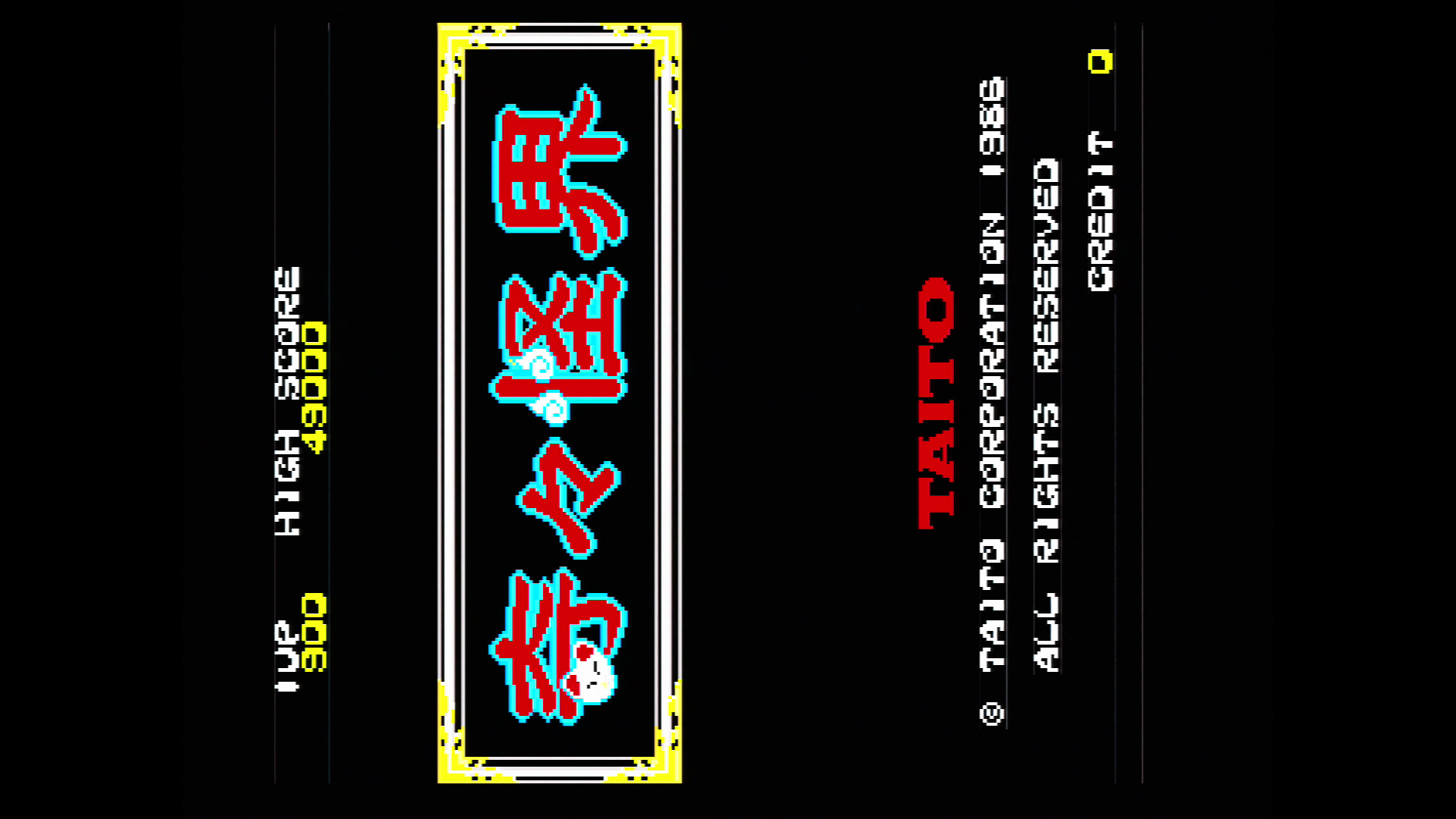Taito-tastic: Kiki Kaikai and its Hardware
So some concepts got stuck in my head early on when looking into hardware that just don’t hold. One of these was that the Neo Geo was unique because of its heavy use of sprites where other systems would use tilemaps. But that’s not unique to the Neo Geo: ADK was just upgrading their Alpha68k family, which all used the same system. Epoch and NEC’s µPD777 did the same thing in the 1970’s for home gamers. And now Taito. Sprite-centric hardware wasn’t unique to SNK at all.
Kiki KaiKai
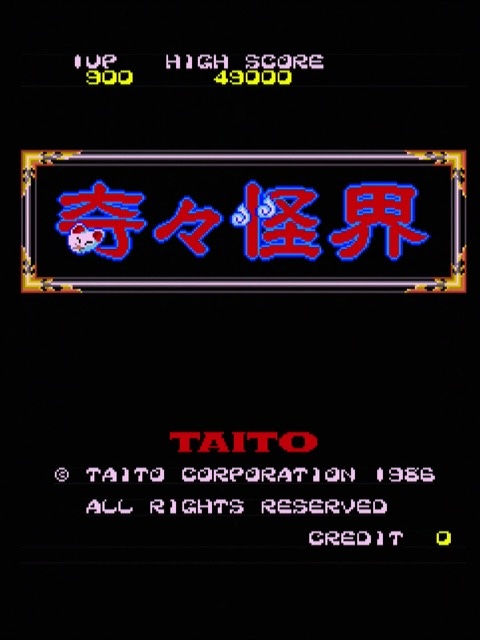
Sometimes a company grabs another company’s series and runs with it. That’s what happened with Kiki KaiKai, Taito’s Shinto-themed shoot ‘em up– you probably know it better for Natsume’s take on the concept, released under the name Pocky & Rocky.

And honestly, 1986’s Kiki KaiKai is a lot rougher than Pocky & Rocky. It’s an unforgiving shoot ‘em up, where the player is on ground level, so has to also interact with terrain on the map. Specifically, as a shrine maiden, you can attack with ofuda paper cards and use a gohei wand as a short-range attack.

Kiki KaiKai is also really hard and unforgiving. But it shares its flaws with a lot of games of its style from the time. See, the problem is your attacks are limited to go in the same eight directions you can move, and the direction you shoot is the same as the direction you move.
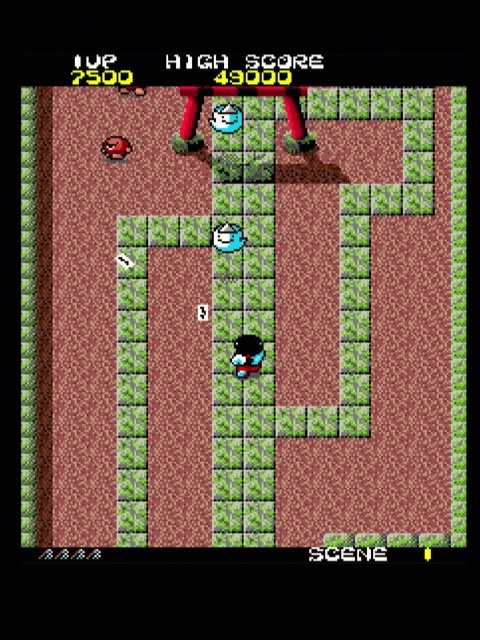
Some games like Smash TV resolved this with twin joysticks for shooting. SNK’s Ikari Warriors (not the Micronics NES port, the arcade one) used a single joystick that could be rotated in addition to its usual directional behavior. Kiki Kaikai would have been better if it was a twin-stick shooter, but it is not.

So I’m not going to give you a review of Kiki Kaikai, other than to say I love the game’s aesthetic. Plus, when you get a game over (I got a lot of them) you get this pinball-style “number match” game, which makes me wonder why you didn’t see this more often in arcades. You can disable this with a DIP switch if you’re a philistine.
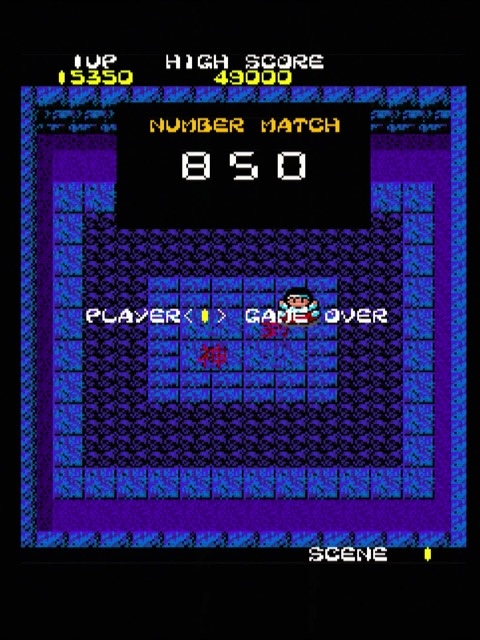
Anyways, I suspect most of my readers came here for the hardware anyway.
The hardware!
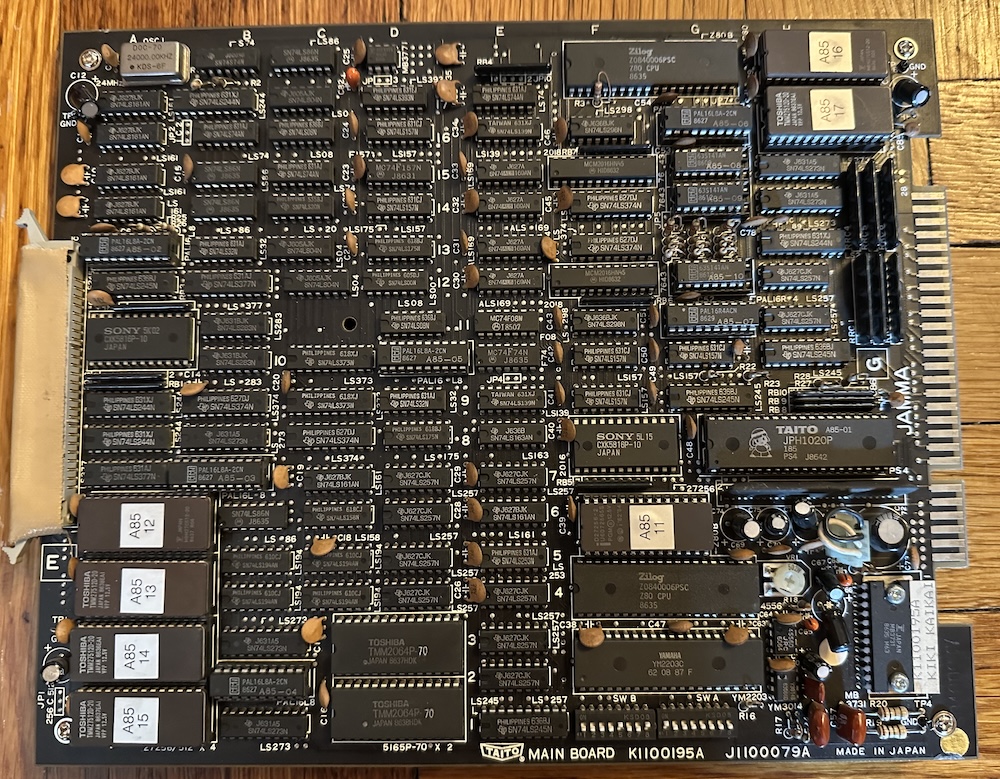
Kiki KaiKai runs on a black PCB. Don’t mind the taped up port at the end; apparently similar hardware used for Taito’s Kick and Run can hook up two PCBs for a four player game, but for this game there’s no such luck. Let’s start digging in with the music section.
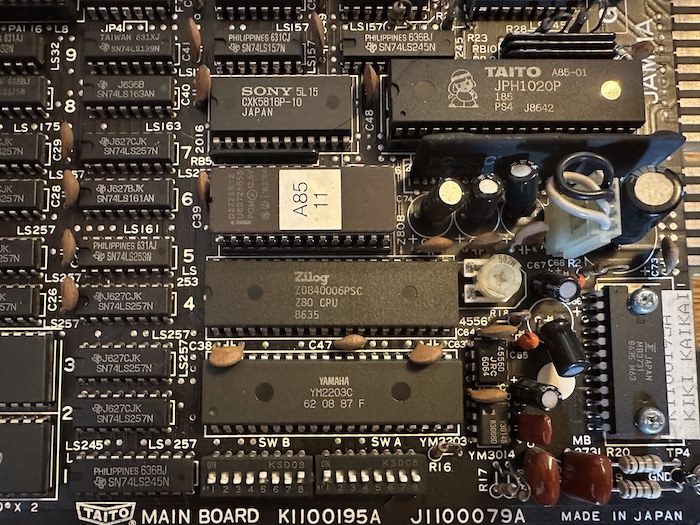
The centerpiece of this is the YM2203 FM synthesizer. On this blog alone you might remember this from the Alpha68k board, Data East’s Gate of Doom, The Legend of Makai, and even the “3-voice” FM sound board on my NEC PC-9821 V13. Definitely a popular choice, and pairing it with a Z80 CPU is no surprise either.
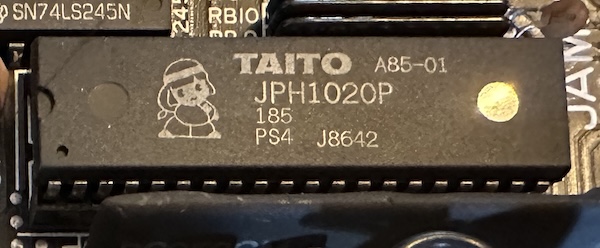
The JPH1020P with its very cute label is a Taito-branded MCU based off of the Motorola 6801 family of 8-bit microcontrollers. Microcontrollers with built-in ROM (in this case, just 4kiB) were popular with some arcade manufacturers as they’re harder to dump and therefore clone, but don’t worry, this one’s dumped and in MAME. Despite being closer to the sound CPU on the board, it has access to a small amount of RAM shared with the main CPU.

The CPU area is also not a surprise. We’ve got another Z80, and you can also see some PROMs; those stamped A85-08, A85-09, and A85-10 are the palette PROMs, a common technique used in those days. This is 12-bit RGB color, which is nothing to sneeze at in 1986. Or today. Don’t sneeze on the PCB, that’s gross. A85-07, as well as some other chips scattered across the board marked similarly to the PROMs, are actually PALs; programmable array logic. This helps make the board more compact than something like the Sega System 1, which was contemporary though getting on in years at this time.
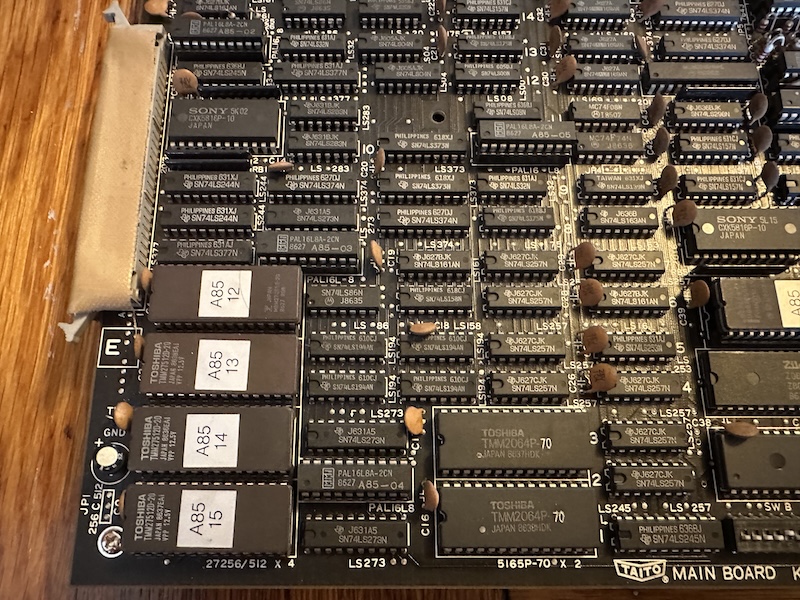
The heart of any 1980s arcade board is its visual circuitry. The Sega System 1 worked in a very common way at the time: tilemap layers and sprite layers, with separate ROMs for each; the tilemap is a grid of tiles that can be scrolled as a unit, and the sprites are moveable line-buffered objects. Sometimes the ROMs were not physically separate, as in the obscure Nintendo Entertainment System. Taito’s system here, though, forgoes the tilemap entirely.
One thing I find interesting are the TMM2064P-70 RAM chips in the lower corner of the image. Looking at the datasheet for the TMM2064 series of RAM chips, there’s no 70 access class listed.

Now, following the naming scheme literally, you’d expect that a TMM2064P-70 would have a 700ns RAM chip. That would be exceedingly slow, though– my guess, combined with the fact that “70” is clearly stamped on after the fact, is that these are TMM2064P chips that have been tested and certified to work at even faster speeds like 70ns. Generally the fastest RAM you need on a board like this is for the linebuffer, so that’d be my guess here.
There’s one interesting consequence of Taito’s sprite-based hardware; it’s actually the thing that led me to write this post. It’s a bit subtle, but look at the title screen.

Not good enough, I removed the interesting part by cropping and shrinking the screenshot. Let’s take my raw video capture, and also do something that you should never do unless you know what you’re doing, boosting the three colors of the video signal.
Click on the image to see it on its own, if on your device that makes it easier to zoom or if you’re just into that sort of thing, I don’t judge.
Notice that there are subtle dark grey lines to the right of the text and objects. This really confused me when I first saw it, but I think I understand what’s going on now.
These lines aren’t present in the gameplay area. But now let’s take a look at a cropped gameplay screenshot. Here, rather than overamplify my signal, I gave my poor suffering hardware a break and just used an image editor to amplify shadows. That’s a much better idea.
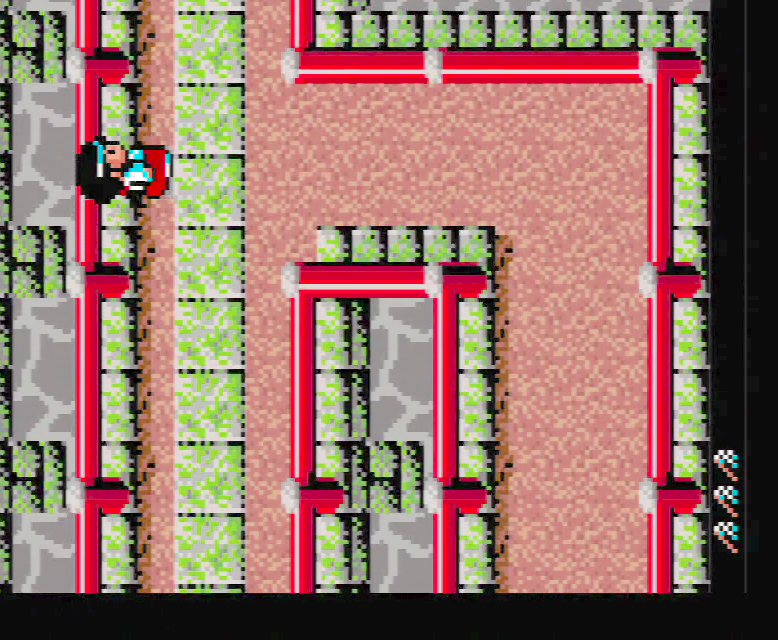
You can see that the gameplay area itself has a faint line, even where the gohei icon is. Specifically, the faint line seems to occur whenever the screen goes from drawing a sprite pixel, to drawing a background pixel. (Remember, there’s no tilemap; the background is just no signal) This is also why it’s so impossibly thin; it’s not a pixel, it’s just a blip in the analog horizontal signal. (The faint line at the bottom of the screen seems to be related to the end of the visible area)
It’s an interesting artifact (and is almost invisible on a CRT), because it reminds me of much more modern artifacts when copy-pasting and arranging pieces on modern image editors that can’t help but try too hard to process everything.
Feelies
One thing I’ve noticed from Japanese arcade sellers in particular is it’s common to include manuals and mini-marquees, even if they’re just photocopies and therefore not the original. It’s a nice touch.
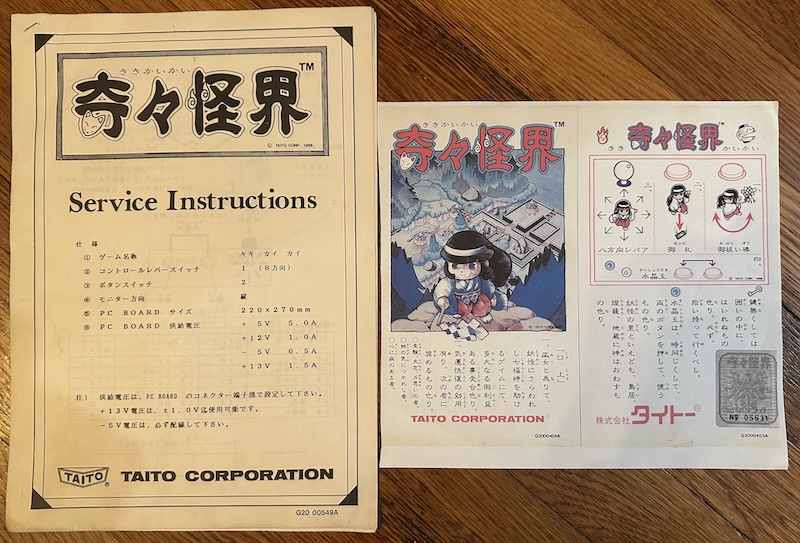
That “Service Instructions” (there’s also a “Game Manual”) might be original; I don’t have a scanner right now, but let me know if you need something from these documents and can’t find it anywhere else, I know people often find these blog posts while searching for information about these PCBs.
Just two other things to note on these. First off is this adorable picture of Pocky (Sayo-chan, in Japanese) on the cover.
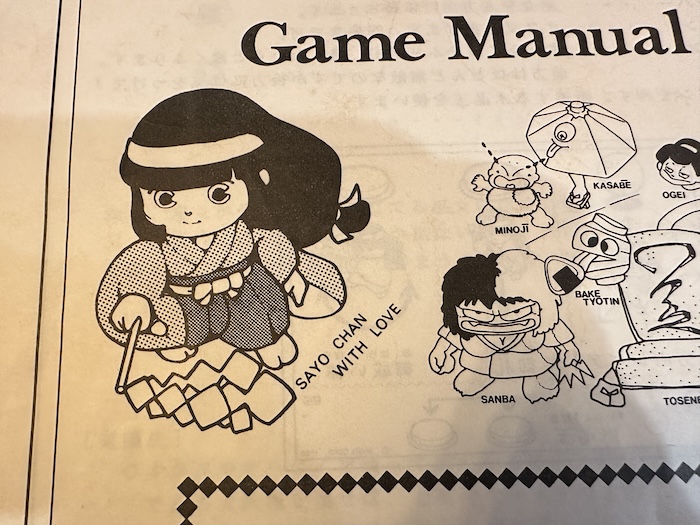
And second is this photocopied elaborate Taito seal, stating “Export Outside Japan Prohibited”. It’s pretty hard to read, so you might need to take my word for it with this picture of a photocopy.
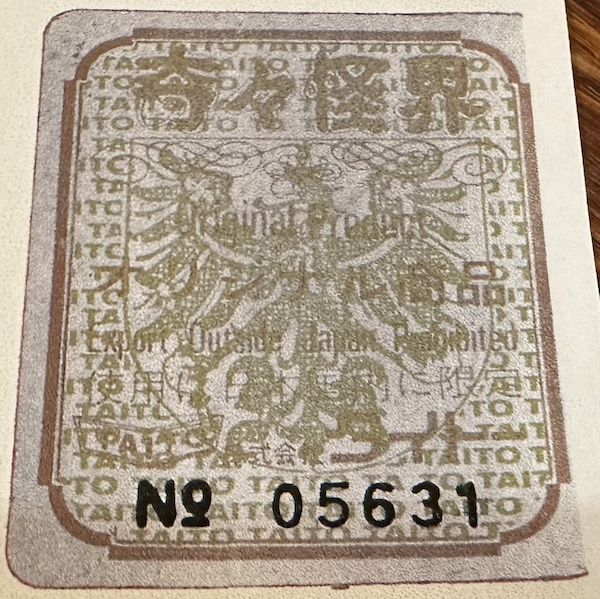
I am not quite sure why the seal of Taito has what (appears to me to be) the Prussian Eagle on it; Michael Kogan, the founder of Taito, was born in Odesa, Ukraine, which was never part of Prussia even at its height, but there’s surely some reason.
Taito-tastic
Kiki Kaikai is one of those games that I think shows a lot of passion and interest from the team who developed it, even if I find it incredibly difficult. So I’ll end with their message; get a Game Over and hold the “Up” direction on the D-pad.
The game was made by Taito’s Kumagaya Laboratory. Kumagaya, 熊谷, means “Bear Valley” in Japanese; and so the hidden message is an adorably literal picture of a bear in a valley.


